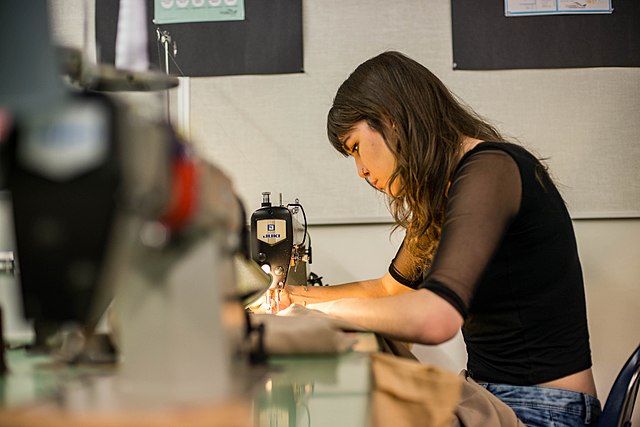Looking for a place that sells healthy, fresh vegetables at an affordable price? Look no further than the recently established Guilford Farmers Market.
Junior Helen Mandalinic, Bonner Center hunger fellow and market manager, conceived the idea in April and began holding markets in July through collaboration with the Bonner Center for Community Service and Learning. The summer months are the most productive for the Guilford Farm, but most of the crop is not used. The farmers’ market was a way to use the excess.
Currently, the market is held on Wednesdays between 2:30 p.m. and 4:30 p.m. in front of the entrance to the Grill.
This project is about more than selling excess vegetables. Mandalinic and senior Katie Maloney, co-manager, hope to educate the community.
“The availability of fresh food is often overlooked in hunger relief,” said Mandalinic. “It shouldn’t be a privilege (to have fresh food).”
In addition to educating about hunger relief, they also aspire to inform students about the foods they are consuming.
“It’s not something (students are) aware of,” said Maloney. “They don’t know how these colorful foods are full of good things.”
The benefits of buying from the farmers’ market go beyond the nutrition in the vegetables. Purchases from the market can ease some of the economic stress that many people are feeling.
“Things are way cheaper (at the market),” said Mandalinic as she picked up a habanero pepper. “This pepper is 25 cents. That’s pocket change. For five bucks, you can make dinner for tonight or for a few nights.”
“Compared to the farmers’ market in Kentucky, it’s cheaper,” said senior Alex Rickman from Lexington, Kentucky.
The profits from the market go back to the farm and the school, producing more than financial benefits.
“It creates a good bond between the students and the farmers,” said senior Madison Hetzel.
The market will be offering a variety of produce, depending on the season, as well as freshly cut zinnias. Pasture-raised beef from Tomahawk Farms, owned by Frank Massey, Initiative on Faith and Practice gifts discernment coordinator, is also sold at the market. All of the items for sale are grown using organic practices.
Mandalinic and Maloney have many hopes for the future of the market. One is finding more vendors who also want to sell extra produce that they are not selling to restaurants or other customers.
Another hope is to involve more people. As more vendors are added and the market grows, the managers want more people to help organize events, advertise and sell.
Maloney expressed their biggest goal for the market.
“Our hope is that other people will get excited.”
[photomosaic nggid=47]












